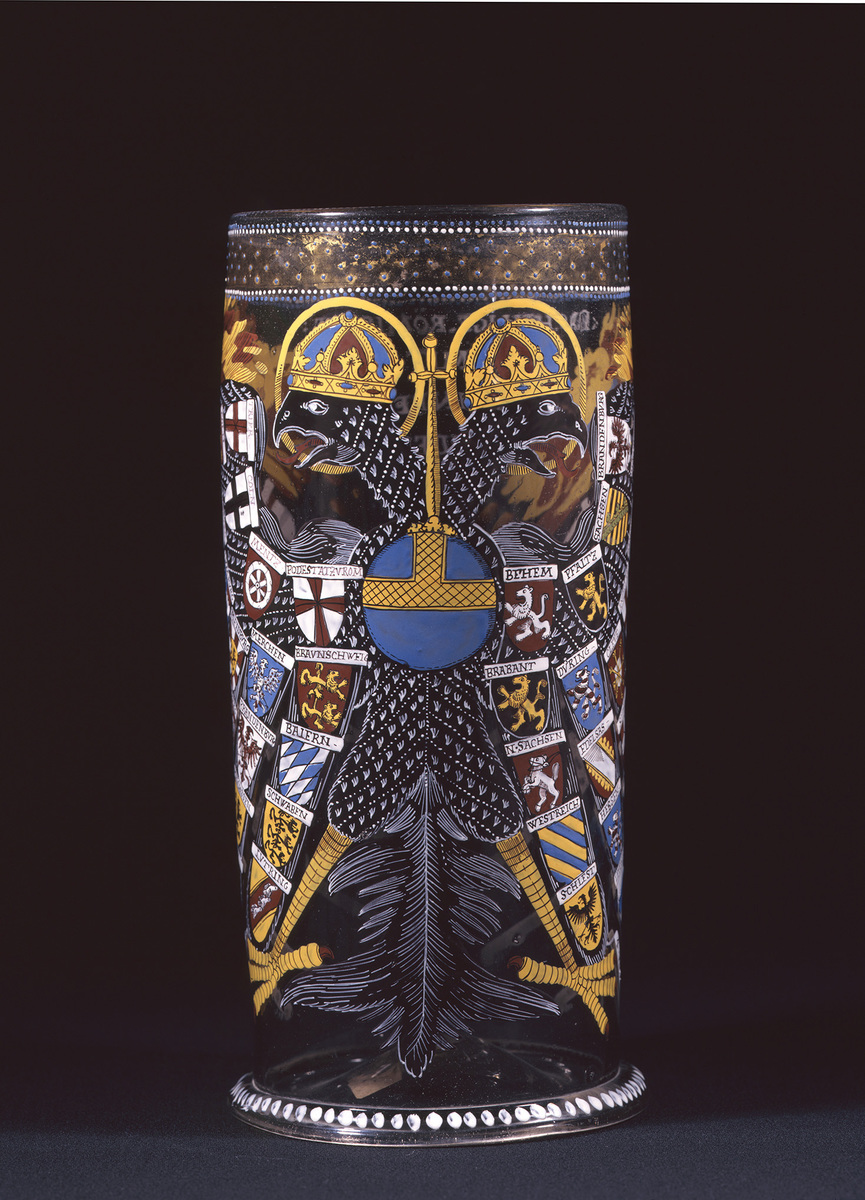Beer Stein Decorated with the Imperial Eagle (1615)
Abstract
The quaternion eagle offered a way of representing the Holy Roman Empire of the German Nation. It could be used to symbolize the estates’ hierarchy and the diversity of the empire, even if such depictions had little to do with the empire’s actual structure. The double eagle represented the emperor as well as the corporate understanding of the imperial estates. That the eagle featured on everyday objects such as this beer stein shows how popular it was.
Source

Source: Imperial eagle beer stein, probably from Bohemia, 1615, glass, enamel painting with gold decoration. Deutsches Historisches Museum, Berlin, Inv.-Nr. KG 2005/43.
© Deutsches Historisches Museum, Berlin
Further Reading
Bettina Brandt, Germania und ihre Söhne. Repräsentation von Nation, Geschlecht und Politik in der Moderne (Historische Semantik, vol. 10). Göttingen: Vandenhoeck & Ruprecht, 2010.
Peter Claus Hartmann, Kulturgeschichte des Heiligen Römischen Reiches 1648–1806. Verfassung. Religion. Kultur. Vienna: Böhlau, 2011.
Helmut Neuhaus, Das Reich in der frühen Neuzeit (Enzyklopädie Deutscher Geschichte, vol. 42). 2nd edition. Munich: Oldenbourg, 2003.
Barbara Stollberg-Rilinger, Das Heilige Römische Reich Deutscher Nation. Vom Ende des Mittelalters bis 1806. 4th edition. Munich: C. H. Beck, 2009.
Joachim Whaley, Germany and the Holy Roman Empire. 2 vols. Oxford and New York: Oxford University Press, 2012.